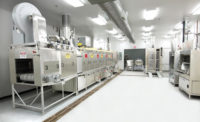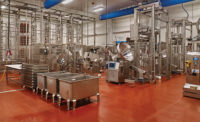Securing a good job upon graduation from college is often a paramount student concern. Therefore, it is important to know the labor market’s patterns and trends when you prepare your career and want to develop sustainable skills that employers need and want. So, what will most college students probably do when they begin to think about their first job and how to prepare to enter the workforce? Google it! A simple search for “What careers are currently most in demand” yields 1.1 million results of sites and articles, such as:
- “What Careers Are Most In-Demand Right Now?” (https://www.indeed.com/career-advice/finding-a-job/in-demand-careers)
- “The 7 Most In-Demand Jobs of the Decade” (https://www.bestcolleges.com/blog/most-in-demand-jobs)
- “2021’s 100 Best Jobs in America” (https://money.usnews.com/careers/best-jobs/rankings/the-100-best-jobs)
- “The 15 most in-demand jobs, some of which pay over $80000” (https://grow.acorns.com/jobs-in-high-demand)
A workforce gap
Certainly, the sheer number of sites almost guarantees that all fulfilling and rewarding career paths be introduced or at least mentioned, doesn’t it? And, surely, given the fundamental and universal nature of the food industry, its career opportunities are amongst those featured in these articles.
Or, are they? When browsing one site after another, careers in food safety or sanitation are nowhere to be found.
This should be a very troubling discovery for every food safety professional, because millions of people buy and eat the food that is grown, processed, delivered, transported, and eventually sold by supermarkets every day. In addition, over the past several years, the food industry as a whole has undergone drastic changes as a result of increasing food safety issues, evolving standards, and tougher laws such as the Food Safety and Modernization Act (FSMA), which, in turn, lead to an increasing need for a properly qualified workforce. Despite this growing demand, it appears that the food industry does not focus enough on supporting careers in food safety and sanitation.
The food industry community does not promote enough dialogue, have enough determination, or undertake sufficient actions to educate college students and encourage young people to pursue careers in this important field. I had the chance to talk to Mondelez International research and development interns last summer and present them with the prospect of a future in sanitation, which is the foundation of a sound food safety program in any food production environment. After the presentation ended, the majority of the interns said that they had no prior knowledge of this kind of opportunity. They took interest and asked a lot of questions about the requirements, skills, and courses to be taken that could help them become qualified for this type of profession.
I also conducted two separate simple surveys with a larger reach. While not intended to be rigorous scientific studies, which typically require a large sample size representative of the American population or at least a targeted ensemble, they are certainly more representative of the general population than answers from a few individuals interning at a single food company.
The first survey targeted current students in college who recently (within four years) graduated from high school in the Chicago area. Most of the participants (82 percent) are seeking a bachelor’s degree and are either in their junior (36 percent) or senior (35 percent) years. Participants were asked, “Have you ever learned of or acquired any knowledge of potential job prospects in sanitation (food processing/manufacturing industry)?” In response, the vast majority (86 percent) of them said no. Just 14 percent of respondents reported having learned of a potential career in sanitation, 1 percent of which indicated that they had interned in sanitation. In addition, most of those who said they learned about possible job opportunities in sanitation indicated that they heard about it from someone in their friend or family network (70 percent); 20 percent said they learned about it during a college job fair, and 10 percent of them discovered it while reading online job posts.
The second survey targeted current professionals working in the sanitation sector. I decided to survey people with whom I connected on the social media platform LinkedIn. My research project reached professionals with a good range of experience working in the field: 34 percent had less than 5 years of experience, 25 percent had 5–10 years of experience, 22 percent had 10–20 years of experience, and 19 percent had more than 20 years of experience. In addition, the survey reached sanitation professionals on six continents: 65 percent in North America, 15 percent in Europe, 12 percent in Asia, 5 percent in South America, 2 percent in Africa, and 1 percent in Australia. Participants were asked, “Have you ever worked with or had the opportunity to tutor a sanitation-assigned intern?” In response, 58 percent said no and 42 percent of them said yes. Moreover, when asked if they had ever acquired any knowledge of career opportunities in sanitation before they entered the workforce and started working full time, the majority (59 percent) said no.
Promoting opportunities
Although these two surveys do not display the whole situation in the sanitation sector, they strongly suggest that there is not enough action taken within the food industry that would motivate young people to pursue a career in sanitation. Therefore, we have a shortage of professionals in the field.
I decided to seek more information and discussed my findings with Angela Anandappa, Ph.D., executive director, Alliance for Advanced Sanitation, Glenview, IL, a nonprofit organization focused on sanitation. She indicated my findings were reflective of what has been a trend in the industry.
“We’ve been studying the job market, skills, and outlook for sanitation careers for some time now,” says Anandappa. “There is a definite need to raise awareness and incentivize programs that help students look at careers in sanitation, and we need companies to work with the Alliance to help achieve recruitment goals, and then develop those employees.”
Alongside providing research translation, training, and industry alignment in sanitation, the Alliance for Advanced Sanitation is working on gathering more data to help achieve these needs. “In order to promote the profession within the industry, we need students to have the knowledge to see sanitation as a viable career with real possibilities for growth and advancement,” says Anandappa. Readers are invited to help with this effort by participating in this Alliance study at www.advancingsanitation.org/projects.
The Alliance will be able to share the study’s findings with a wider audience as soon as they become available. In the meantime, the Alliance is collaborating with several industry experts who are dedicated to improving hygiene and the industry as a whole. Furthermore, the Alliance welcomes cooperation with all sectors of industry with a need to clean their food manufacturing equipment and the facilities, as well as all research and educational institutions that prepare the workforce to achieve those goals.
As a Mondelez International sanitation professional, I am proud to contribute to an organization that places a high priority on food safety and sanitation. This year, for the first time, we hired a sanitation intern who will work in one of the facilities and learn about the industry—and particularly the field of sanitation. Furthermore, the company has partnered with College of DuPage, Lisle, IL, and Lake Park High School, Roselle, IL, to encourage careers in the sanitation industry. As part of their program, they will show students a video produced by Mondelez showcasing sanitation as a possible profession.
Every team member of a food manufacturing company plays a vital role in that company’s success. At Mondelēz International, our purpose is to empower people to snack right through offering the right snack, for the right moment, made the right way—in a production environment kept safe by the next wave of sanitation professionals entering the industry.








